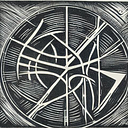Various types of "detectors" have been used. In the crudest versions, the particle is blocked completely, almost as if the door was shut. In more sophisticated versions, they may pass the electron (or atom, etc) through a scintillator that lets it through and emits a tiny amount of light from the interaction, or they may scatter the electron off of other small particles to register that it has passed by. There may be other techniques I don't recall. In any case, you are right that these "detections" are not done without physical consequence-- they are all essentially collisions in some way or another, and they undoubtedly effect the state of the particle being "detected"
Written by Theodore Greenbaum
Writer interested in physics, science, politics, economics, and literature.
